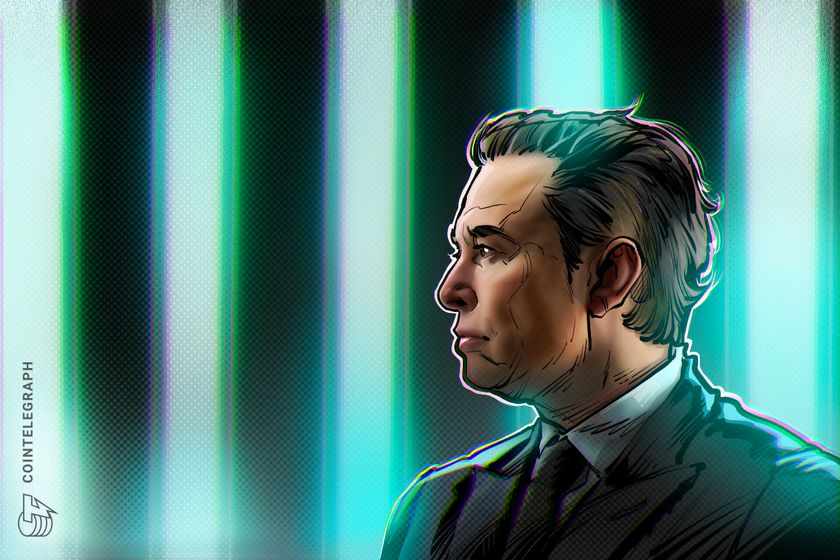

Opinion by: James Strudwick, executive director, Starknet Foundation
The outlook surrounding the use of new technologies has shifted in Washington. Tesla CEO and presidential adviser Elon Musk’s proposition to incorporate blockchain technology into the US Treasury has placed blockchain and its use for state finances at the forefront of the global debate. According to Musk, much of this drive is rooted in the concern over the unsustainability of current government spending. With its immutable ledgers and transparent audit trails, blockchain is waiting in the wind, offering a potential solution to managing vast public finances.
Musk advocates for a unified information system that can track real-time payments, credentials and government resources, spurring a debate within the fintech community about the pros and cons of introducing such a tool at the government level. The idea is compelling, as the description on the blockchain tin effectively promises accountability, traceability and streamlined operations. The shift here, namely to a blockchain-powered government infrastructure, presents several challenges that may prove to be beyond what the new administration has expected thus far.
Blockchain as state appendage
A concern for stakeholders orbiting the blockchain world revolves around the sheer scale of government operations. Every day, the US government handles thousands of transactions across various departments. The feasibility of Musk’s vision is put into question simply as a result of its own complexity. The provable security that blockchain technology must offer while handling millions of daily transactions without buckling under the load to succeed at this scale is enormous.
A proposed solution by Musk is a hybrid model that uses “Validium” zero-knowledge rollups. The speed and efficiency of modern ZK-rollups, which can handle hundreds of millions of transactions daily, have the potential to make sure each citizen’s share of government transactions is intact and verifiable. The technology’s rapidly evolving nature, scaling to handle even higher transaction volumes in the coming years, indicates that this could be achievable.
Unfortunately, this in itself comes with its own hurdles, particularly when integrating public services, which tend to operate in silos.
The human question
The great irony here is that Musk’s declarations of government inefficiency as a reason for the ongoing shakeups could be one of the biggest reasons not to go ahead with the plan. The real obstacle here is not so much technological as it is deeply, irrevocably human. The transition from archaic legacy systems to the more modern infrastructure of blockchain requires not just software updates but an entire reprogramming of the workforce. Government employees embedded in bureaucracy are used to outdated systems, and retraining them will be no small task.
Recent: US housing dept mulls blockchain, stablecoin to pay and monitor grants: Report
Moreover, current government databases are a labyrinth of poorly documented, indecipherable data. Extracting and migrating this data to a blockchain infrastructure is itself a task that may require serious investment. For all its elegance, blockchain wasn’t built to contend with such inefficiency. Despite its potential for handling complex, distributed environments, the difficulties present in the system itself could make the transition more complicated than the hassle is worth.
Balancing transparency and confidentiality
Transparency of federal spending is also a factor worth highlighting. The innate strength of blockchain and its much-lauded appeal is its strength. It permits citizens to track how public funds are allocated and spent. Musk’s premise could foster a so-far unseen level of accountability, which makes transactions, every delegation of power and every resource distribution visible to the public in real-time.
The problem is that sensitive government data, classified information or personal identification could be dangerously exposed on a public blockchain. Musk’s response is to try to tether sensitive data to private channels in the blockchain and ensure that only individuals with the appropriate authorization or from specific departments can access confidential information. Theoretically, this addresses the security concern while allowing blockchain’s public verifiability.
Musk’s offer could lead to a more efficient, accountable system. The social drive behind this is the longstanding criticism of wasted spending and resource misallocation. There is also a possibility of strengthening democratic processes by holding public officials more accountable. A decentralized authority has the broader impact of empowering citizens through real-time access.
There is a forward-thinking aspect to the vision. It raises a profound question. Technology could address human governance challenges, but we run the risk of a fundamental shift in how we understand privacy and accountable authority. As we question the nature of governance, it warrants careful consideration of the role of blockchain and what it could ultimately mean for the future of society as a whole.
Opinion by: James Strudwick, executive director, Starknet Foundation.
This article is for general information purposes and is not intended to be and should not be taken as legal or investment advice. The views, thoughts, and opinions expressed here are the author’s alone and do not necessarily reflect or represent the views and opinions of Cointelegraph.



